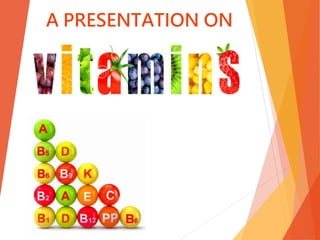The document provides a comprehensive overview of vitamins, defining their role as essential organic nutrients required in small amounts for growth and health. It classifies vitamins into fat-soluble and water-soluble categories, detailing dietary sources and functions for each type, including vitamins A, D, E, K, and various B vitamins along with vitamin C. Additionally, it covers the symptoms of deficiencies and the importance of vitamins in bodily functions such as immune response, metabolism, and overall health maintenance.














































